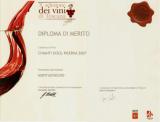
The city of Empoli is in the province of Florence and is set in a territory crossed by four rivers: the Arno, the Pesa, the Orme and the Elsa. It is equidistant from the big Tuscan centres and it has a population of about 45,000 inhabitants.
The origin of this city is still the subject of controversial debates. It seems that the old city centre was already inhabited in the Roman times during the first imperial age, and that it was certainly populated until the IV century A.D., at least. The numerous rivers of the territory made this area fertile and rich in clay.
Therefore, they favoured the development of agriculture and a flourishing river trade based on the production and the sell of amphorae. According to the "Tabula Peutingeriana", namely a medieval map that is the copy of a document dating to the IV century A.D., Empoli was probably called "In Portu" for its river port. Another XVI-century source talks about the existence of an early Christian built-up area around the V-VI century A.D. near the current Collegiata of Sant' Andrea. Yet, the information available is not precise in this case, either.
The first document where the name "Empoli" first appeared was the act of foundation of the Abbey of San Sabino in Cerasiolo in 780. At that time there was a castle, but the new built-up area started to grow around the parish of Sant' Andrea after the year 1119 .
In the beginning, it was a feud of the Counts Guidi, but, in 1182, it swore loyalty to the Florentine Republic. In 1260, Empoli housed the famous Ghibelline parliament, that is the historic meeting held after the Montaperti battle. This assembly, that was also cited by Dante in his "Divine Comedy", bequeathed the name of Palazzo Ghibelllino to the then Palazzo Guidi. Around the XV century, the third wall was built and it is still visible in some parts of the city.
The XVI century was a turbulent period for Tuscany dominated by the incursions and the pillages by armies that Empoli was not able to avoid. The Duke Valentino looted it in 1501 and the imperial Spanish troops did the same in 1530. This last event represented the divide between the thriving and vital Empoli of the Middle Ages and the one experiencing an economic, political and commercial decline at the beginning of the Modern Age. It was thanks to the Grand Duke Leopold I of Lorraine that the city recovered its strength by triggering a process of industrialization that interested numerous areas of the Florentine territory.
Since the first half of the XIX century, Empoli has been more and more populated because of the affluence of many families looking for a job in its numerous manufacturing businesses. The construction of a bridge over the Arno river and of the railway connecting Florence to Pisa further enhanced this phenomenon. Empoli paid its renown as an industrial city in the Second World War. Unfortunately, the old city centre underwent serious damages after the bombardments it was subjected to.



